BTA16-600B Triacs: BTA16-600B Datasheet PDF, Pinout, Circuit
STMICROELECTRONICS BTA16-600BRGTriac, 600 V, 50 mA, 1 W, 1.5 V, TO-220AB, 160 A









STMICROELECTRONICS BTA16-600BRGTriac, 600 V, 50 mA, 1 W, 1.5 V, TO-220AB, 160 A
BTA16-600B is designed for high-performance full−wave ac control applications where high noise immunity and high commutating di/dt are required. This article will unlock its datasheet, pinout, circuit diagram and more details about BTA16-600B.
BTA16-600B Pinout
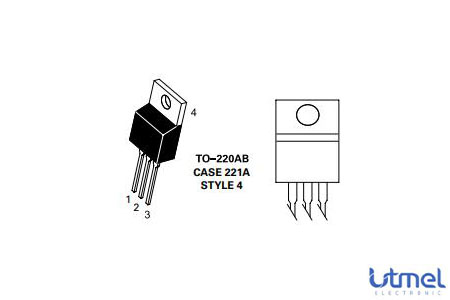
BTA16-600B Pinout
BTA16-600B CAD Model
Symbol

BTA16-600B Symbol
Footprint
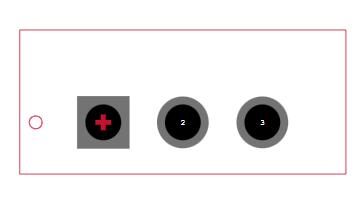
BTA16-600B Footprint
CAD Model

BTA16-600B 3D Model
BTA16-600B Description
The BTA16-600BRG is a 3-pin Snubberless Insulated TRIAC for general purpose AC switching and can be used as an ON/OFF function. The BTA series TRIAC provides a voltage insulated tab by using an internal ceramic pad.
BTA16-600B Equivalent
The equivalent for BTA16-600B:
BTA16-600S
BT167-600E
BTA16-600B Feature
High commutation performance
Low thermal resistance with clip bonding
Medium current operation
BTA16-600B Application
Motor Drive & Control
Industrial
Lighting
BTA16-600B Functional Diagram

BTA16-600B Functional Diagram
BTA16-600B Test Circuit

Simplified Test Circuit to Measure the Critical Rate of Rising of Commutating current (di/dt)
BTA16-600B Package
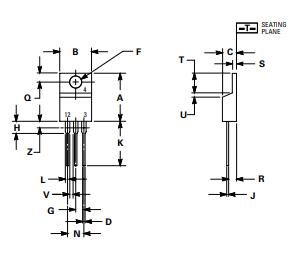
BTA16-600B Package
BTA16-600B Manufacturer
STMicroelectronics is a global independent semiconductor company and is a leader in developing and delivering semiconductor solutions across the spectrum of microelectronics applications. An unrivaled combination of silicon and system expertise, manufacturing strength, Intellectual Property (IP) portfolio and strategic partners positions the Company at the forefront of System-on-Chip (SoC) technology and its products play a key role in enabling today's convergence trends.
Specifications
- TypeParameter
- Lifecycle Status
Lifecycle Status refers to the current stage of an electronic component in its product life cycle, indicating whether it is active, obsolete, or transitioning between these states. An active status means the component is in production and available for purchase. An obsolete status indicates that the component is no longer being manufactured or supported, and manufacturers typically provide a limited time frame for support. Understanding the lifecycle status is crucial for design engineers to ensure continuity and reliability in their projects.
ACTIVE (Last Updated: 7 months ago) - Factory Lead Time11 Weeks
- Contact Plating
Contact plating (finish) provides corrosion protection for base metals and optimizes the mechanical and electrical properties of the contact interfaces.
Tin - Mount
In electronic components, the term "Mount" typically refers to the method or process of physically attaching or fixing a component onto a circuit board or other electronic device. This can involve soldering, adhesive bonding, or other techniques to secure the component in place. The mounting process is crucial for ensuring proper electrical connections and mechanical stability within the electronic system. Different components may have specific mounting requirements based on their size, shape, and function, and manufacturers provide guidelines for proper mounting procedures to ensure optimal performance and reliability of the electronic device.
Through Hole - Mounting Type
The "Mounting Type" in electronic components refers to the method used to attach or connect a component to a circuit board or other substrate, such as through-hole, surface-mount, or panel mount.
Through Hole - Package / Case
refers to the protective housing that encases an electronic component, providing mechanical support, electrical connections, and thermal management.
TO-220-3 - Number of Pins3
- Weight6.000006g
- Number of Elements1
- Operating Temperature
The operating temperature is the range of ambient temperature within which a power supply, or any other electrical equipment, operate in. This ranges from a minimum operating temperature, to a peak or maximum operating temperature, outside which, the power supply may fail.
-40°C~125°C TJ - Packaging
Semiconductor package is a carrier / shell used to contain and cover one or more semiconductor components or integrated circuits. The material of the shell can be metal, plastic, glass or ceramic.
Tube - JESD-609 Code
The "JESD-609 Code" in electronic components refers to a standardized marking code that indicates the lead-free solder composition and finish of electronic components for compliance with environmental regulations.
e3 - Part Status
Parts can have many statuses as they progress through the configuration, analysis, review, and approval stages.
Active - Moisture Sensitivity Level (MSL)
Moisture Sensitivity Level (MSL) is a standardized rating that indicates the susceptibility of electronic components, particularly semiconductors, to moisture-induced damage during storage and the soldering process, defining the allowable exposure time to ambient conditions before they require special handling or baking to prevent failures
1 (Unlimited) - Number of Terminations3
- ECCN Code
An ECCN (Export Control Classification Number) is an alphanumeric code used by the U.S. Bureau of Industry and Security to identify and categorize electronic components and other dual-use items that may require an export license based on their technical characteristics and potential for military use.
EAR99 - Additional Feature
Any Feature, including a modified Existing Feature, that is not an Existing Feature.
UL RECOGNIZED - Voltage - Rated DC
Voltage - Rated DC is a parameter that specifies the maximum direct current (DC) voltage that an electronic component can safely handle without being damaged. This rating is crucial for ensuring the proper functioning and longevity of the component in a circuit. Exceeding the rated DC voltage can lead to overheating, breakdown, or even permanent damage to the component. It is important to carefully consider this parameter when designing or selecting components for a circuit to prevent any potential issues related to voltage overload.
600V - Current Rating
Current rating is the maximum current that a fuse will carry for an indefinite period without too much deterioration of the fuse element.
16A - Base Part Number
The "Base Part Number" (BPN) in electronic components serves a similar purpose to the "Base Product Number." It refers to the primary identifier for a component that captures the essential characteristics shared by a group of similar components. The BPN provides a fundamental way to reference a family or series of components without specifying all the variations and specific details.
BTA16 - Pin Count
a count of all of the component leads (or pins)
3 - Configuration
The parameter "Configuration" in electronic components refers to the specific arrangement or setup of the components within a circuit or system. It encompasses how individual elements are interconnected and their physical layout. Configuration can affect the functionality, performance, and efficiency of the electronic system, and may influence factors such as signal flow, impedance, and power distribution. Understanding the configuration is essential for design, troubleshooting, and optimizing electronic devices.
Single - Case Connection
Case Connection refers to the method by which an electronic component's case or housing is connected to the electrical circuit. This connection is important for grounding purposes, mechanical stability, and heat dissipation. The case connection can vary depending on the type of component and its intended application. It is crucial to ensure a secure and reliable case connection to maintain the overall performance and safety of the electronic device.
ISOLATED - Max Repetitive Reverse Voltage (Vrrm)
The Max Repetitive Reverse Voltage (Vrrm) is a crucial parameter in electronic components, particularly in diodes and transistors. It refers to the maximum voltage that can be applied across the component in the reverse direction without causing damage. This parameter is important for ensuring the proper functioning and longevity of the component in circuits where reverse voltage may be present. Exceeding the Vrrm rating can lead to breakdown and failure of the component, so it is essential to carefully consider this specification when designing or selecting components for a circuit.
600V - JEDEC-95 Code
JEDEC-95 Code is a standardized identification system used by the Joint Electron Device Engineering Council to categorize and describe semiconductor devices. This code provides a unique alphanumeric identifier for various memory components, ensuring consistency in documentation and communication across the electronics industry. The format includes information about the type, capacity, and technology of the device, facilitating easier specification and understanding for manufacturers and engineers.
TO-220AB - RMS Current (Irms)
RMS Current (Irms) refers to the Root Mean Square value of the alternating current flowing through an electronic component or circuit. It is a measure of the effective current that produces the same heating effect as the equivalent DC current. In AC circuits, the current continuously changes direction, so using the RMS value helps in calculating power dissipation and determining the component's capability to handle the current without overheating. RMS Current is crucial in selecting components like resistors, capacitors, and inductors to ensure they can safely operate within their specified current ratings.
16A - Hold Current
the minimum current which must pass through a circuit in order for it to remain in the 'ON' state.
50mA - Trigger Device Type
Trigger Device Type is a parameter in electronic components that refers to the type of device or mechanism used to initiate a specific action or function within the component. This parameter specifies the specific trigger device, such as a sensor, switch, or signal input, that is required to activate or control the operation of the component. Understanding the trigger device type is crucial for proper integration and operation of the electronic component within a larger system or circuit. By specifying the appropriate trigger device type, engineers and designers can ensure that the component functions correctly and responds to the intended input signals or conditions.
4 QUADRANT LOGIC LEVEL TRIAC - Voltage - Gate Trigger (Vgt) (Max)
Voltage - Gate Trigger (Vgt) (Max) refers to the maximum voltage level required to trigger the gate of a semiconductor device, such as a thyristor or triac, into the conductive state. When the gate receives this voltage, it initiates the device's conduction, allowing current to flow between its anode and cathode. Exceeding this voltage can lead to unwanted behavior or damage to the component, making it a critical parameter in designing circuits that utilize these devices. Understanding Vgt is essential for ensuring proper operation and reliability in electronic applications.
1.3V - Current - Non Rep. Surge 50, 60Hz (Itsm)
The parameter "Current - Non Rep. Surge 50, 60Hz (Itsm)" in electronic components refers to the maximum non-repetitive surge current that a component can withstand without damage during a single surge event at frequencies of 50Hz or 60Hz. This parameter is important for assessing the robustness and reliability of the component in handling sudden spikes or surges in current that may occur in the electrical system. It helps in determining the level of protection needed for the component to ensure its longevity and proper functioning in various operating conditions. Manufacturers provide this specification to guide engineers and designers in selecting the appropriate components for their applications based on the expected surge current levels.
160A 168A - Current - Gate Trigger (Igt) (Max)
Current - Gate Trigger (Igt) (Max) refers to the maximum gate trigger current required to activate a semiconductor device, such as a thyristor or triac. It is the minimum current that must flow into the gate terminal to ensure that the device turns on and conducts current between its anode and cathode. Exceeding this value can lead to unnecessary power consumption, while insufficient current may prevent the device from turning on effectively. This parameter is crucial for circuit design, as it influences the selection of gate driving circuits.
50mA - Leakage Current (Max)
Leakage Current (Max) is a parameter that specifies the maximum amount of current that can flow through an electronic component when it is in an off state. It represents the amount of current that leaks through the component due to imperfections in its insulation or semiconductor materials. Excessive leakage current can lead to power loss, reduced efficiency, and potential reliability issues in electronic circuits. Manufacturers provide this specification to help designers ensure that the leakage current does not exceed acceptable limits for the intended application. It is typically measured in microamps (μA) or nanoamps (nA) and is an important consideration in low-power and high-precision electronic designs.
2mA - Critical Rate of Rise of Off-State Voltage-Min
The parameter "Critical Rate of Rise of Off-State Voltage-Min" in electronic components refers to the minimum rate at which the off-state voltage of a device must rise in order to trigger a critical event, such as a breakdown or failure. This parameter is crucial for ensuring the reliable operation of the component under various conditions. It helps determine the maximum allowable rate of voltage increase that the component can withstand without experiencing detrimental effects. Manufacturers specify this parameter to guide engineers and designers in selecting and using the component within its safe operating limits to prevent damage or malfunction. Understanding and adhering to this parameter is essential for maintaining the performance and longevity of electronic devices.
400V/us - Triac Type
Triac Type refers to the classification of triacs based on their electrical characteristics and applications. Triacs are semiconductor devices that can control current flow in both directions and are commonly used in AC power control. Different types of triacs may have variations in parameters such as voltage rating, current rating, triggering method, and switching speed, making them suitable for specific applications like light dimmers, motor speed controls, and heating regulation. Understanding the triac type is crucial for selecting the appropriate component for a given circuit design.
Standard - Critical Rate of Rise of Commutation Voltage-Min
The Critical Rate of Rise of Commutation Voltage-Min is a parameter in electronic components, particularly in thyristors and power electronics. It refers to the minimum speed at which the voltage across the device's terminals can rise during the turn-off process without causing unwanted turn-on events or false triggering. This parameter is crucial for ensuring the reliable operation of the component in high-frequency applications and helps prevent damage from voltage transients that exceed safe thresholds. In essence, it defines the limits for safe voltage rise times to maintain proper device performance.
10V/us - Height15.9mm
- Length10.4mm
- Width4.6mm
- REACH SVHC
The parameter "REACH SVHC" in electronic components refers to the compliance with the Registration, Evaluation, Authorization, and Restriction of Chemicals (REACH) regulation regarding Substances of Very High Concern (SVHC). SVHCs are substances that may have serious effects on human health or the environment, and their use is regulated under REACH to ensure their safe handling and minimize their impact.Manufacturers of electronic components need to declare if their products contain any SVHCs above a certain threshold concentration and provide information on the safe use of these substances. This information allows customers to make informed decisions about the potential risks associated with using the components and take appropriate measures to mitigate any hazards.Ensuring compliance with REACH SVHC requirements is essential for electronics manufacturers to meet regulatory standards, protect human health and the environment, and maintain transparency in their supply chain. It also demonstrates a commitment to sustainability and responsible manufacturing practices in the electronics industry.
No SVHC - Radiation Hardening
Radiation hardening is the process of making electronic components and circuits resistant to damage or malfunction caused by high levels of ionizing radiation, especially for environments in outer space (especially beyond the low Earth orbit), around nuclear reactors and particle accelerators, or during nuclear accidents or nuclear warfare.
No - RoHS Status
RoHS means “Restriction of Certain Hazardous Substances” in the “Hazardous Substances Directive” in electrical and electronic equipment.
ROHS3 Compliant - Lead Free
Lead Free is a term used to describe electronic components that do not contain lead as part of their composition. Lead is a toxic material that can have harmful effects on human health and the environment, so the electronics industry has been moving towards lead-free components to reduce these risks. Lead-free components are typically made using alternative materials such as silver, copper, and tin. Manufacturers must comply with regulations such as the Restriction of Hazardous Substances (RoHS) directive to ensure that their products are lead-free and environmentally friendly.
Lead Free
Datasheet PDF
- Datasheets :
What is the BTA16-600BRG?
Snubberless Insulated TRIAC.
How does the BTA series TRIAC provide voltage insulated tabs?
Ceramic pad.
What type of packages are the BTA16?
Through-hole or surface-mount packages.
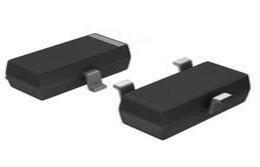 XC6206 Low ESR Voltage Regulator: Datasheet pdf, Pinout and Equivalents
XC6206 Low ESR Voltage Regulator: Datasheet pdf, Pinout and Equivalents26 November 20213185
 2N1711 NPN Power Transistor: 2N1711 Transistor Datasheet, Pinout and Equivalents
2N1711 NPN Power Transistor: 2N1711 Transistor Datasheet, Pinout and Equivalents14 December 20214762
 NE556 Timer: Datasheet, Pinout and Circuit
NE556 Timer: Datasheet, Pinout and Circuit20 July 20214370
 PIC10F200/202/204/206 Microcontrollers: Technical Insights
PIC10F200/202/204/206 Microcontrollers: Technical Insights29 February 202463
 ADA4939-1YCPZ-R7 OPAMP: Pinout, Package, Datasheet
ADA4939-1YCPZ-R7 OPAMP: Pinout, Package, Datasheet14 August 2024248
 A Comprehensive Guide to OP97EN8#PBF Linear Amplifier
A Comprehensive Guide to OP97EN8#PBF Linear Amplifier06 March 202486
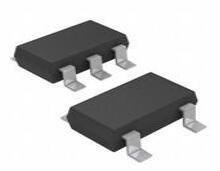 A1266 3D Hall-Effect Switch: Datasheet, Equivalent and Pinout
A1266 3D Hall-Effect Switch: Datasheet, Equivalent and Pinout20 October 20211914
 LP5912-3.3DRVT LDO Regulator Pos, 1.8V 0.5A 6-Pin WSON EP T/R and 500mA Low-Noise
LP5912-3.3DRVT LDO Regulator Pos, 1.8V 0.5A 6-Pin WSON EP T/R and 500mA Low-Noise14 February 20221565
 Switching Regulator Noise: Comprehensive Understanding and Analysis
Switching Regulator Noise: Comprehensive Understanding and Analysis26 February 20222219
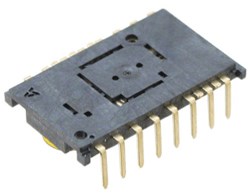 What is an Optical Sensor?
What is an Optical Sensor?19 March 20216258
 How does the CPU recognize the Code?
How does the CPU recognize the Code?08 August 20221074
 What is UWB (Ultra-wideband)?
What is UWB (Ultra-wideband)?04 June 20216241
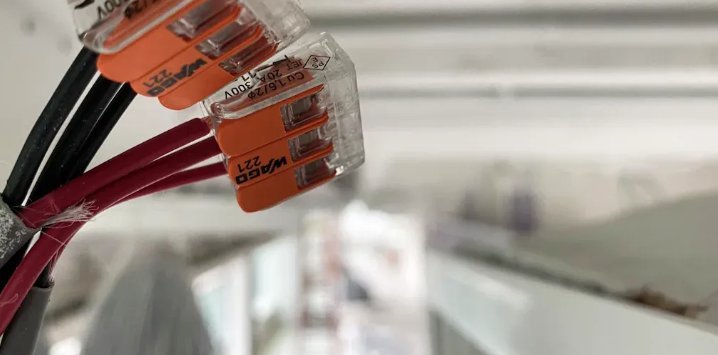 How to Choose the Right Spade Connector for Any Project
How to Choose the Right Spade Connector for Any Project18 July 20251702
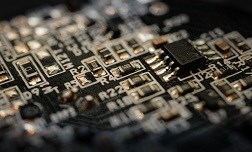 The Difference between Switching Power Supply and Ordinary Power Supply
The Difference between Switching Power Supply and Ordinary Power Supply12 July 20221488
 Exploring the Advancements in Storage Technologies and Grid Architecture of Electric Vehicle Charging Systems
Exploring the Advancements in Storage Technologies and Grid Architecture of Electric Vehicle Charging Systems18 October 20232056
 What is Digital Power Supply?
What is Digital Power Supply?10 November 20202775
STMicroelectronics
In Stock: 53015
United States
China
Canada
Japan
Russia
Germany
United Kingdom
Singapore
Italy
Hong Kong(China)
Taiwan(China)
France
Korea
Mexico
Netherlands
Malaysia
Austria
Spain
Switzerland
Poland
Thailand
Vietnam
India
United Arab Emirates
Afghanistan
Åland Islands
Albania
Algeria
American Samoa
Andorra
Angola
Anguilla
Antigua & Barbuda
Argentina
Armenia
Aruba
Australia
Azerbaijan
Bahamas
Bahrain
Bangladesh
Barbados
Belarus
Belgium
Belize
Benin
Bermuda
Bhutan
Bolivia
Bonaire, Sint Eustatius and Saba
Bosnia & Herzegovina
Botswana
Brazil
British Indian Ocean Territory
British Virgin Islands
Brunei
Bulgaria
Burkina Faso
Burundi
Cabo Verde
Cambodia
Cameroon
Cayman Islands
Central African Republic
Chad
Chile
Christmas Island
Cocos (Keeling) Islands
Colombia
Comoros
Congo
Congo (DRC)
Cook Islands
Costa Rica
Côte d’Ivoire
Croatia
Cuba
Curaçao
Cyprus
Czechia
Denmark
Djibouti
Dominica
Dominican Republic
Ecuador
Egypt
El Salvador
Equatorial Guinea
Eritrea
Estonia
Eswatini
Ethiopia
Falkland Islands
Faroe Islands
Fiji
Finland
French Guiana
French Polynesia
Gabon
Gambia
Georgia
Ghana
Gibraltar
Greece
Greenland
Grenada
Guadeloupe
Guam
Guatemala
Guernsey
Guinea
Guinea-Bissau
Guyana
Haiti
Honduras
Hungary
Iceland
Indonesia
Iran
Iraq
Ireland
Isle of Man
Israel
Jamaica
Jersey
Jordan
Kazakhstan
Kenya
Kiribati
Kosovo
Kuwait
Kyrgyzstan
Laos
Latvia
Lebanon
Lesotho
Liberia
Libya
Liechtenstein
Lithuania
Luxembourg
Macao(China)
Madagascar
Malawi
Maldives
Mali
Malta
Marshall Islands
Martinique
Mauritania
Mauritius
Mayotte
Micronesia
Moldova
Monaco
Mongolia
Montenegro
Montserrat
Morocco
Mozambique
Myanmar
Namibia
Nauru
Nepal
New Caledonia
New Zealand
Nicaragua
Niger
Nigeria
Niue
Norfolk Island
North Korea
North Macedonia
Northern Mariana Islands
Norway
Oman
Pakistan
Palau
Palestinian Authority
Panama
Papua New Guinea
Paraguay
Peru
Philippines
Pitcairn Islands
Portugal
Puerto Rico
Qatar
Réunion
Romania
Rwanda
Samoa
San Marino
São Tomé & Príncipe
Saudi Arabia
Senegal
Serbia
Seychelles
Sierra Leone
Sint Maarten
Slovakia
Slovenia
Solomon Islands
Somalia
South Africa
South Sudan
Sri Lanka
St Helena, Ascension, Tristan da Cunha
St. Barthélemy
St. Kitts & Nevis
St. Lucia
St. Martin
St. Pierre & Miquelon
St. Vincent & Grenadines
Sudan
Suriname
Svalbard & Jan Mayen
Sweden
Syria
Tajikistan
Tanzania
Timor-Leste
Togo
Tokelau
Tonga
Trinidad & Tobago
Tunisia
Turkey
Turkmenistan
Turks & Caicos Islands
Tuvalu
U.S. Outlying Islands
U.S. Virgin Islands
Uganda
Ukraine
Uruguay
Uzbekistan
Vanuatu
Vatican City
Venezuela
Wallis & Futuna
Yemen
Zambia
Zimbabwe





